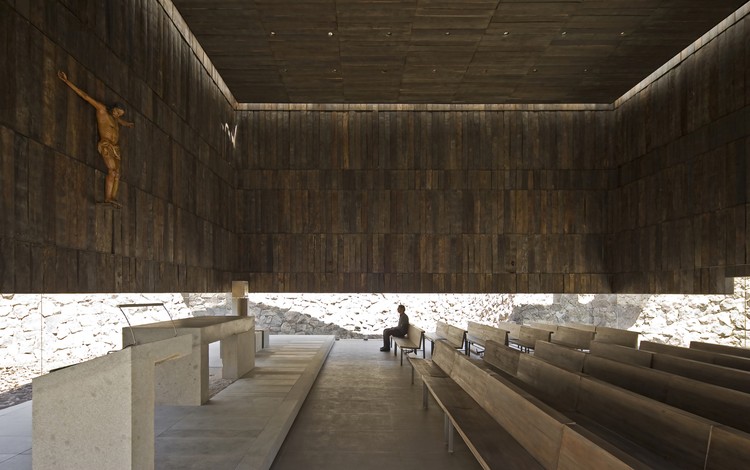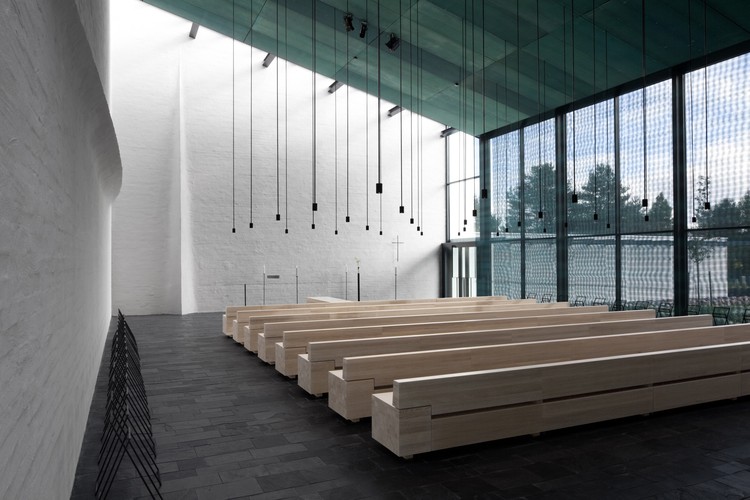
Light is an important, if complex, tool in architecture. Not only does it lend atmosphere, texture, and vibrancy, but it is increasingly essential in an age where technology alienates us from nature. In this excerpt from Mary Guzowski's new book, The Art of Architectural Daylighting, she introduces the science and art of daylighting - and details six ways the masters approach the challenge.
Daylight as Phenomenon and Material
Daylight is a dynamic environmental phenomenon and an ephemeral architectural material. It embodies the dimension of time as the movement of light and shadow reveal the changing diurnal and seasonal cycles. In a digital age that runs 24/7, daylight is an antidote to our increasing alienation from nature. Daylight and the changing environmental forces of sun, wind, and weather help us to know “where we are” and “who we are” by rooting us in the ecological phenomena of a particular place, in that climate, and on that site. When coupled with passive solar and bioclimatic design strategies, daylight can reduce energy consumption and provide environmental benefits while enhancing human comfort, health, and well-being.
Daylight is also an architectural medium and the most intangible of materials. Light embodies the changing moods of the sky and qualities of place as it interacts with the building form, materials, surface textures, hues, and reflectivity. The varied and changing material and atmospheric effects of daylight can awaken the senses and further enhance our understanding of and relationship to the world in which we live.
My new book, The Art of Architectural Daylighting, uses twelve “masters of light” case studies to explore how contemporary architects have bridged the poetic and practical potentials of daylighting. These masters of light artfully reconcile the objective attributes of site, climate, and program with the subjective qualities of beauty and human experience. During my research for the book, I discovered that several trends have influenced the evolution of daylighting design in contemporary architecture, including: 1) advances in the science of daylighting design; 2) new construction materials and technologies; and 3) advances in digital design methods and tools.

Daylight Design Trends
Over the past decade, the “science of daylighting” has matured as practitioners and building-science researchers have continued to demonstrate measurable benefits of daylighting in the areas of energy savings, carbon and greenhouse gas reductions, increased human comfort, and improved productivity and health. Great improvements have also been made in digital rendering, analysis tools, and an ever-increasing number of daylight metrics, guidelines, and assessment methods. These developments have benefited architects and designers in more effectively integrating daylight with other design and performance issues.
Yet, with the promise of scientific and analytical advances, there also lies a risk of too narrowly framing the parameters of daylighting to those that are measurable and empirically defined. An analytical perspective on daylighting design needs to be balanced with a focus on the qualitative and experiential dimensions of natural light.
Architectural daylighting and its design processes are complex, multi-faceted, and oftentimes messy and unpredictable. Alvar Aalto suggested that architecture is a “synthetic process,” which is a good reminder for today’s daylighting designers … architecture has often been compared with science. … But architecture is not a science. It is still the same great synthetic process. … Its essence can never become purely analytical. Architectural study always involves a moment of art and instinct. Its purpose is still to bring the world of matter into harmony with human life.” (1)

Louis Kahn underscored the programmatic and spatial significance of daylight: “One may say that architecture is the thoughtful making of spaces. … It is the creating of spaces that evoke a feeling of appropriate use. To the musician a sheet of music is seeing from what he hears. A plan of a building should read like a harmony of spaces in light. Even a space intended to be dark should have just enough light from some mysterious opening to tell us how dark it really is. Each space must be defined by its structure and the character of its natural light.” The focus on the building façade and the surface of the envelope need not be at the expense of interior luminous and spatial qualities, experience, comfort, and performance. The challenge of contemporary daylighting is to explore the full potential of design from the inside out and the outside in; to mediate space and surface; and to celebrate practical performance benefits as well as aesthetic, experiential, and ecological dimensions.
Case Study Profiles
The case studies I selected for The Art of Architectural Daylighting illustrate a cross-section of daylighting design intentions, building types, scales, and geographic locations. The daylighting profiles are organized around six themes, including: 1) choreographed light, 2) atmospheric light, 3) sculpted light, 4) structured light, 5) material light, and 6) integrated light. The “masters of light” range from emerging architects to seasoned practitioners. They represent different design philosophies, priorities, methods, and approaches to natural light. Included are works by architects Tadao Ando, Brad Cloepfil (Allied Works), David Chipperfield, Mario Cucinella, Sverre Fehn, Steven Holl, Neil Gillespie (Reiach and Hall Architects), Vo Trong Nghia, Renzo Piano, Anu Puustinen and Ville Hara (Avanto Architects), Cristián Undurraga, and Peter Zumthor. They all approach daylight as an environmental phenomenon and a dynamic “building material” with evocative site, form-giving, programmatic, material, and experiential design potential. Each chapter explores a daylighting theme through the lens of two case studies to address related design intentions, climate and geographic implications, program considerations, and architectural strategies.

Masters of Light
Daylighting has both quantitative and qualitative dimensions. On the one hand, light is tangible, measurable, and predictable. The apparent movement of the sun can be precisely determined, and luminous attributes can be measured using standardized metrics such as lux, footcandles, daylight factors, and candelas per square meter. Yet, there is also a dimension of natural light that is unpredictable and immeasurable. There is a necessary element of intuition and experimentation required to discover the oftentimes unanticipated and emergent qualities of natural light as it interacts in time with changing site forces and sky conditions, architectural form, and material properties. The processes of discovery, experimentation, and serendipity are inherent to the art of daylighting design.
Daylighting masterpieces of exceptional beauty and architectural clarity form a body of seminal works that shape and inspire succeeding generations of designers. The legacy of the modern masters of light such as Alvar Aalto, Louis Kahn, Carlo Scarpa, and Luis Barragán continue to influence architects and daylighting designers to this day. It is hoped that the clarity, innovation, and elegance of the contemporary projects in the book will inform and inspire design practitioners, educators, and students in their own daylighting explorations. May The Art of Architectural Daylighting be of benefit to all those who seek to integrate the rich potential of daylighting into contemporary architectural design.
Citations:
- Goran Schildt, Alvar Aalto: The Mature Years, New York: Rizzoli, 1989, 272.
- Robert Twombly, Louis Kahn: Essential Texts, New York: W. W. Norton & Company, 2003, 68.
The Art of Architectural Daylighting by Mary Guzowski is published by Laurence King. Redeem 35% off RRP by using code ARCHDAILY at www.laurenceking.com.
Author Bio
Mary Guzowski is a Professor in the School of Architecture at the University of Minnesota. She is a co-author of the Carbon Neutral Design Project and she oversaw the development of the MS in Sustainable Design Program at the University of Minnesota. Her latest book is The Art of Architectural Daylighting, published by Laurence King.







